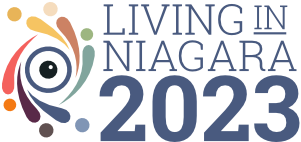Low birth weight rate: This refers to the percent of babies born weighing less than 2,500 grams. Low birth weight is an indicator of the general health of newborns and a key determinant of infant survival and development. Low birth weight infants are at a greater risk for developing life-long health problems. Low birth weight is the main reason babies die in the first year of life. In Canada, approximately 6% of all births are LBW babies. The costs to care for the immediate needs of these babies, and to provide the long-term care and special attention that some will need throughout life are extremely high.
According to data pulled from Intellihealth, in 2009, the per cent of live births by low birth weight (< 2,500 grams) in Ontario was 6.7 per 100 live singleton births and in Niagara it was slightly lower at 5.7 per 100. In Niagara, our LBW rates have remained relatively stable at approximately 6%.
Source: Niagara Region Public Health, 2011.
Table 7.3 Low Birth Weight (≤2,500 Grams) Rate per 100 Singelton Births
|
2003 |
2004 |
2005 |
2006 |
2007 |
2008 |
2009 |
|
| NIAGARA |
5.8 |
5.6 |
6.2 |
6.3 |
6.6 |
6.0 |
5.7 |
| ONTARIO |
6.7 |
6.4 |
6.5 |
6.5 |
6.5 |
6.5 |
6.7 |
Source: Intellihealth
In 2005/2007, the infant mortality rate per 1000 live births was lower in Niagara and the rate was 4.8 per 1,000 live births (5.6 in 2000/2002) compared to the 2005/2007 rate of 4.9 per 1000 live births in Ontario and 5 per 1000 in Canada. Source: Statistics Canada CANSIM, Table 102-4306
Infant mortality … Infant mortality rate (per 1,000 live births) is 4.8 in Niagara Region area (5.1 Ontario and 5.0 in Canada).
Teen pregnancies …The rate of teen pregnancies in Niagara (30.9 per 1,000 females 15 – 19 years of age) continues to be higher than the rates in Ontario (28.4 per 1,000 females 15-19 years of age). However, the rate is decreasing along with the overall provincial trends. Figure 7.4
Source: Niagara Region, Health Story of Niagara









